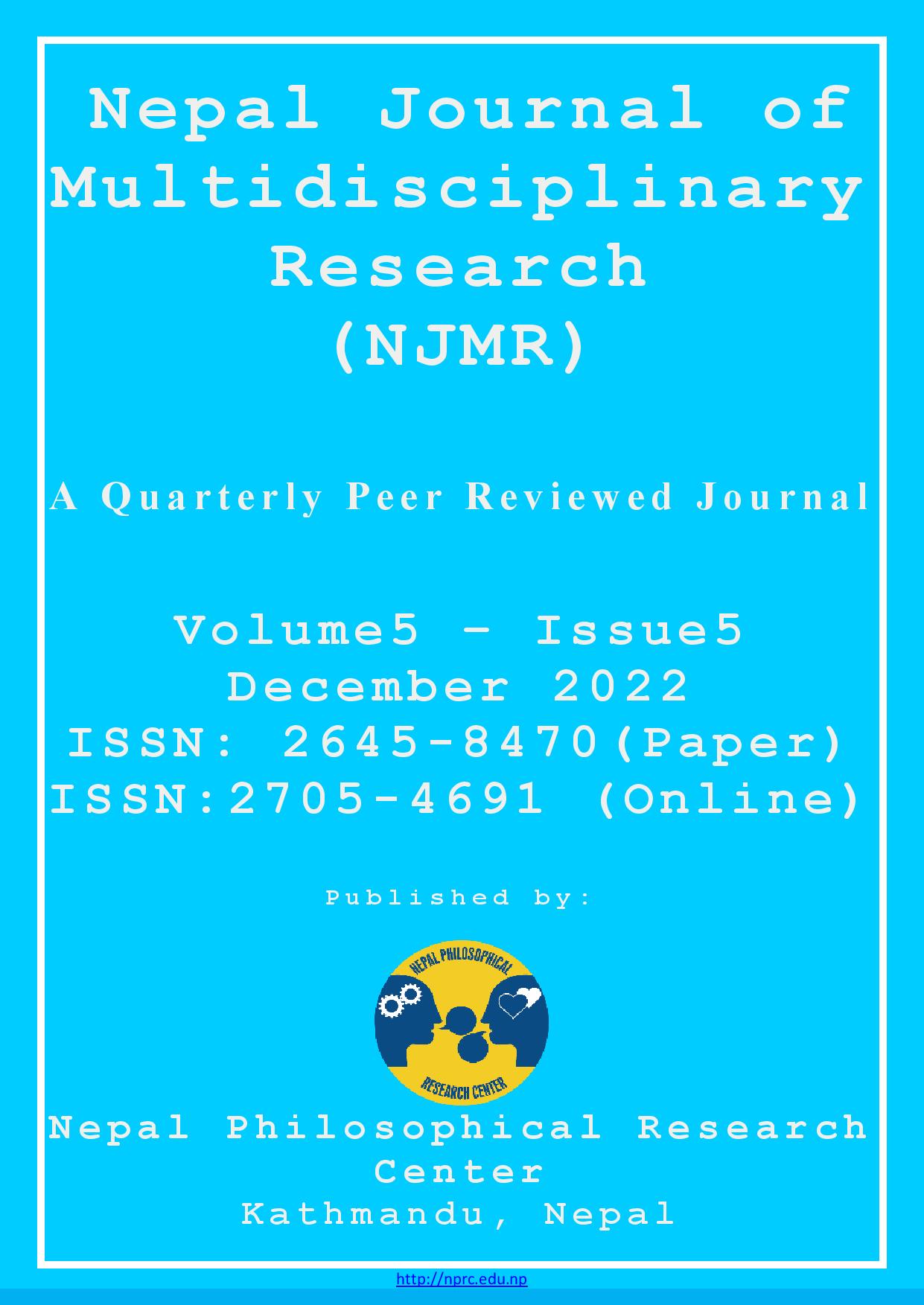Determinants of Mutual Fund Performance in Nepal
DOI:
https://doi.org/10.3126/njmr.v5i5.51798Keywords:
Cash ratio, Expense ratio, Fund age, Fund size, Sharpe's measureAbstract
This study examines how internal and macroeconomic factors influence mutual fund performance. This study includes an analysis of the impact of internal characteristics such as fund size, fund age, cash ratio, and expense ratio. The macroeconomic factors are the commercial bank rate, the inflation rate, and the stock index. Six mutual funds from the list of closed-end mutual funds were selected as a sample for descriptive and causal-comparative analysis to draw conclusions. Fund size, fund age, cash ratio, expense ratio, commercial bank rate, inflation rate, and Nepal Stock Exchange (NEPSE) index are predictor variables and risk-adjusted performance evaluation approach Sharpe's ratio as a dependent variable in this study. Findings show that mutual funds' performance in Nepal had not satisfactory except NIBL Pragati Fund (NIBLPF). Likewise, evidence suggests that fund age has a significant favorable impact on performance. In contrast, cash ratios, expense ratios, bank rates, inflation, and stock indexes have a significant negative impact on mutual fund performance in Nepal. In contrast, the factors determining fund size are contradictory, but the market index has no effect on Nepalese mutual fund performance. Hence, a fund's internal and macroeconomic forces are major determinants of its performance in Nepal.
Downloads
Downloads
Published
How to Cite
Issue
Section
License
Copyright (c) 2022 Ramesh Pant, Binod Ghimire, Rewan Kumar Dahal

This work is licensed under a Creative Commons Attribution-NonCommercial 4.0 International License.
This license enables reusers to distribute, remix, adapt, and build upon the material in any medium or format for noncommercial purposes only, and only so long as attribution is given to the creator.




